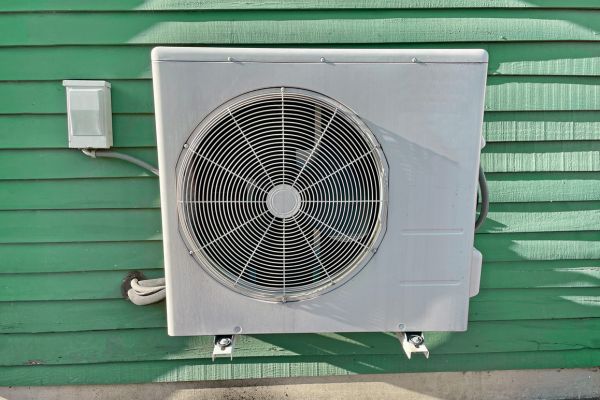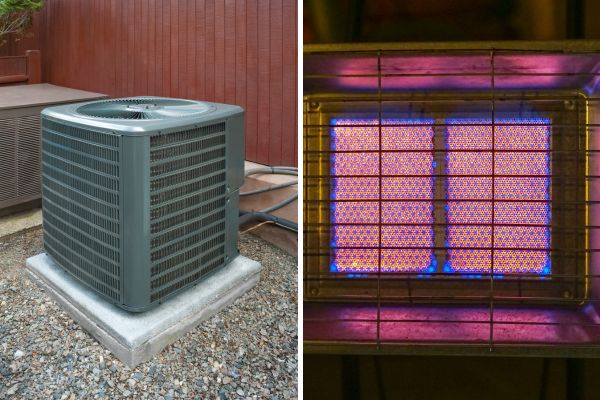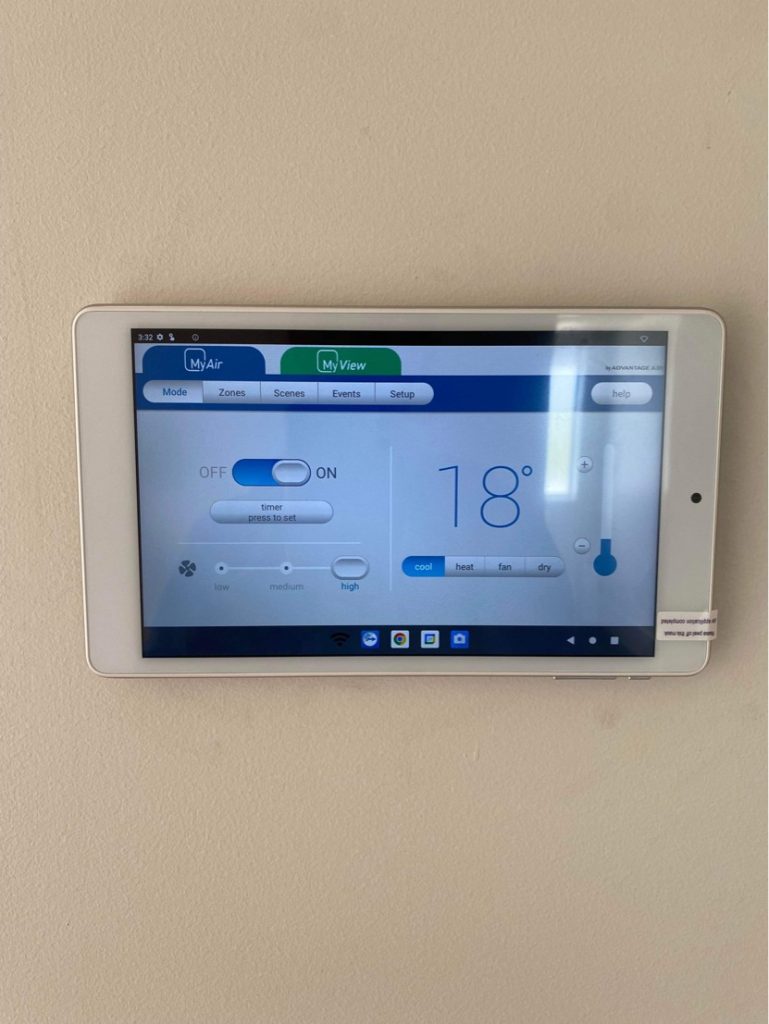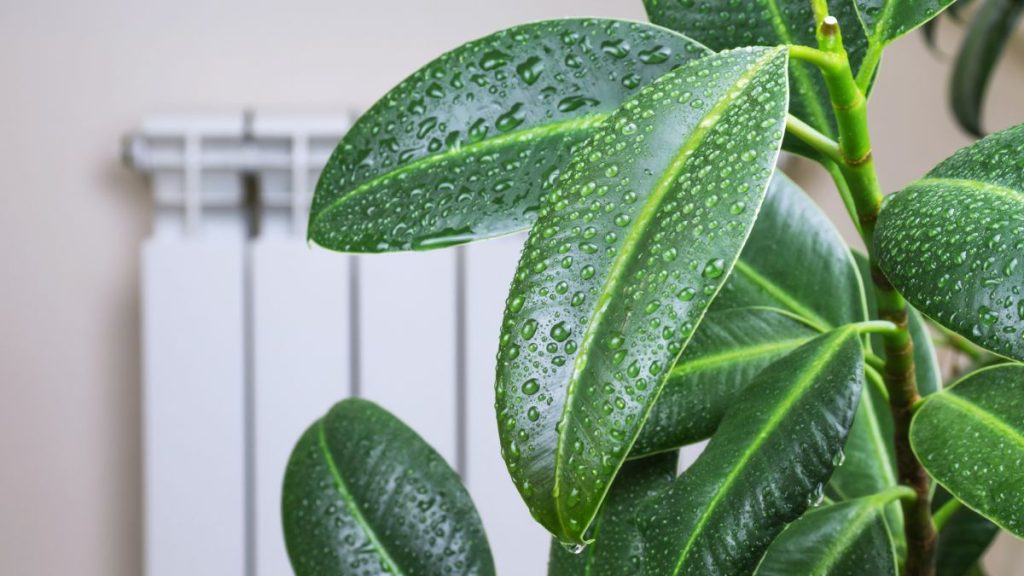Heat or cool – it depends on the outside seasons. But is it really that simple? Is the cooling buddy in your room versatile enough to warm up the interiors during winter?
If you are using a split AC, the answer is both yes and no. A split AC can be a versatile option only when it is a reverse cycle air conditioning system. But an AC designed only for cooling will not heat your room in the winter.
Let us dig deeper to understand how to use a split AC in winter.
How Does a Split System Air Con Work?

Split AC systems are extremely popular across Australia as they offer good efficiency and are easy to install. But will your split system air conditioner heat the room in winter or not? It depends on the type of system you are using.
All split systems combine an outdoor condenser and an indoor evaporator unit through which the refrigerant circulates via piping. During summer, the refrigerant collects the indoor heat and rejects it outside through the condenser, thereby cooling the indoor space. This process continues till the desired indoor temperature is reached.
In multi-split system air conditioners, multiple indoor units from various areas of a house are connected to a single outdoor unit.
However, a standard split system only offers cooling and will not be able to heat your room in winter. For heating, you need a device that can collect heat from outside and deliver it to the room. Considering the outside temperature in winter is low, that seems challenging.
Enter the 2-in-1 system or a reverse cycle air conditioning system that has both heating and cooling modes. But how?
While the device still works on the principle of heat exchange, a role reversal happens in the system in winter. The role of the condenser and evaporator is reversed and the refrigerant collects heat from outside and rejects it in the room.
A reverse cycle air conditioner, also called a mini-split heat pump, is more expensive than a standard or non-reverse cycle air conditioner. While it is super versatile, the problem is, that in extremely cold conditions, a buildup of ice and frost on the outdoor unit is common. When temperatures are below zero, a heat pump can struggle to deliver sufficient heat.
Luckily, most of us Aussies don’t have to worry about it too much if ever.
But if you live in Tasmania or the Alps, you should know that some devices have a defrosting option to minimise the problem. Otherwise, heat pumps can be coupled with a furnace for better heating.
The good news is that the milder winter temperatures in Brisbane make it perfect for running a reverse cycle AC system to maintain the right temperature. Besides, modern heat pumps can function at temperatures as low as zero degrees.
The Cost of Running a Split System in Winter
Do you know what the best part of a heat pump is?
Thanks to the laws of thermodynamics, the device does not generate heat but only transfers it between two locations. Since no fuel is used for heating, it is an efficient heating device.
Besides, heat pumps are efficient devices that are not power-hungry. The exact savings will depend on the model, power consumption, and electricity prices.
The average running cost for a reverse cycle device can be around $350, considering 6-7 hours of daily use during winter. Remarkably, a reverse cycle AC can generate 3 to 6 units of heat from each unit of electricity consumed.
In other words, the device can be between 300–600% efficient. Honestly, that is incredible! If the energy bills are hitting you hard, this is the cheapest form of heating you can use for your home.
According to the heating expert Chris Barnes, “Running a reverse-cycle air conditioner for the entire year can cost less than running an electric heater for just three months over winter.”
Plus, heat pumps cut down on emissions are better for the environment. If you run them on solar power or other forms of renewable electricity, they are the best options.
However, the initial costs of a reverse cycle device are higher. The average cost of a medium-sized device is $2000 and larger devices can cost as high as $5500. On top of that, there are split system AC installation charges. If you are planning to use a ducted reverse-cycle air conditioning system for a large house, the installation costs can be $6000 or more.
Reverse Cycle Split AC Vs. Gas Space Heater

Both heating devices are efficient and ideal for small spaces. Since every home is different, choosing between the two options will depend on your needs and budget.
The upfront costs of buying a gas space heater are lower. Since a gas heater generates localised heat, it is a good choice as an additional heating device for areas where the temperature dives below freezing. They are handy devices with the added advantage of excellent portability. But, they are best used for smaller spaces and not the right option for larger rooms.
The power consumption of a space heater can vary between 750 watts to 3,000 watts depending on its size. While not as high as heat pumps, high-efficiency gas heaters can have an efficiency rating of 90%. The monthly costs will depend on the operating time.
But consider this. A reverse cycle device combines the functions of heating, cooling, filtering, and dehumidifying in one system. The advantage of having a single device for year-round use is undeniable.
Hacks to Improve the Performance of a Reverse Cycle Split AC
There’s something to keep in mind here.
For every degree rise or fall in heating and cooling temperatures, your home’s energy consumption can rise between 5% to 10%. So here are a few tips to improve the performance of a reverse cycle split AC.
- Ensure proper maintenance of the split AC and keep the internal filters clean.
- Choose the right device size to meet the heating and cooling needs of the space where it is installed.
- Keep the doors of the room closed to prevent heat leakage.
- Make sure that your house, especially the windows and basements, are properly insulated.
- Optimise the operating times by using the programmable timer to cut costs and reduce stress on the system.
How to Use Split AC in Winter: FAQs
Can we use split AC in winter?
A split AC can be used in winter as long as it is a reverse cycle device or a heat pump. If it’s a system only designed for cooling, any number of issues could happen. From frozen coils to an overheated compressor, these things can be costly to fix.
Which AC mode to use in winter?
In winter use the heat mode in your reverse cycle air conditioner. If there’s lots of rain and moisture, you can occasionally combine it with dry mode.
How to prepare AC for winter?
If your split AC is maintained properly, it does not need any special preparations for winter. Just shift to heating mode and it will start functioning. In case constant use in summer has made the filters dirty, cleaning or replacing them before winter is a good idea.



